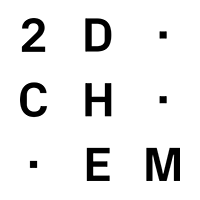Energy storage and conversion
Our team has a strong focus on electrochemistry and the investigation of electrode materials for green hydrogen production, lithium and sodium batteries or supercapacitors. Addressing their study from the lab scale to real devices.
Layered hydroxides
In 2D-Chem we also devote a great effort to research on layered single hydroxides (LSHs) and layered double hydroxides (LDHs). Concerning LDHs, their structure consists of stacks of positively charged metal hydroxides layers with the presence of charge balancing anions that are placed between the cationic layers.
One of the main features of LDHs is their high versatility regarding metallic composition and nature of the interlayer anion. This wide chemical tunability allows the synthesis of multifunctional LDHs with a great variety of properties that allow their application in different fields such as energy storage and conversion, catalysis, anion exchange or magnetism, to name a few.
Carbon nanoforms and hybrid materials
We also work on chemical functionalization and hybridization of graphene and related carbon nanomaterials, which are of fundamental interest because open the door to unprecedented properties and applications, ranging from electronics to energy storage and conversion or catalysis.
Several chemical pathways towards covalent and non-covalent functionalization of carbon nanoforms have been developed allowing to controllably engineering their bandgap structure, creating novel architectures, and manipulating their interfacial characteristics. In 2D-Chem we take advantage of the wide versatility of these materials as excellent building blocks for the construction of layered heterostructures and more complex hybrid architectures.
2D-Pnictogens
Our newest research line encompasses the group of 2D pnictogens, a novel class of graphene-like layered elemental materials from the Group 15 of the periodic table. Layered P, As, Sb, and Bi have received considerable attention over the last years since they can outperform and/or complement graphene properties.
Their strongly layer-dependent unique properties range from a semiconducting to a metallic behaviour, including high carrier mobilities, tunable bandgaps, strong spin-orbit coupling or transparency, making these materials extremely exciting. In 2D-Chem we explore their synthesis, characterization, exfoliation, functionalization and intercalation using different approaches.




